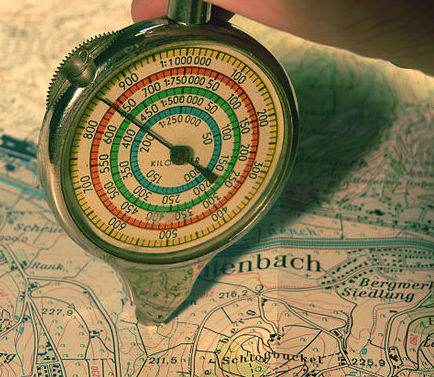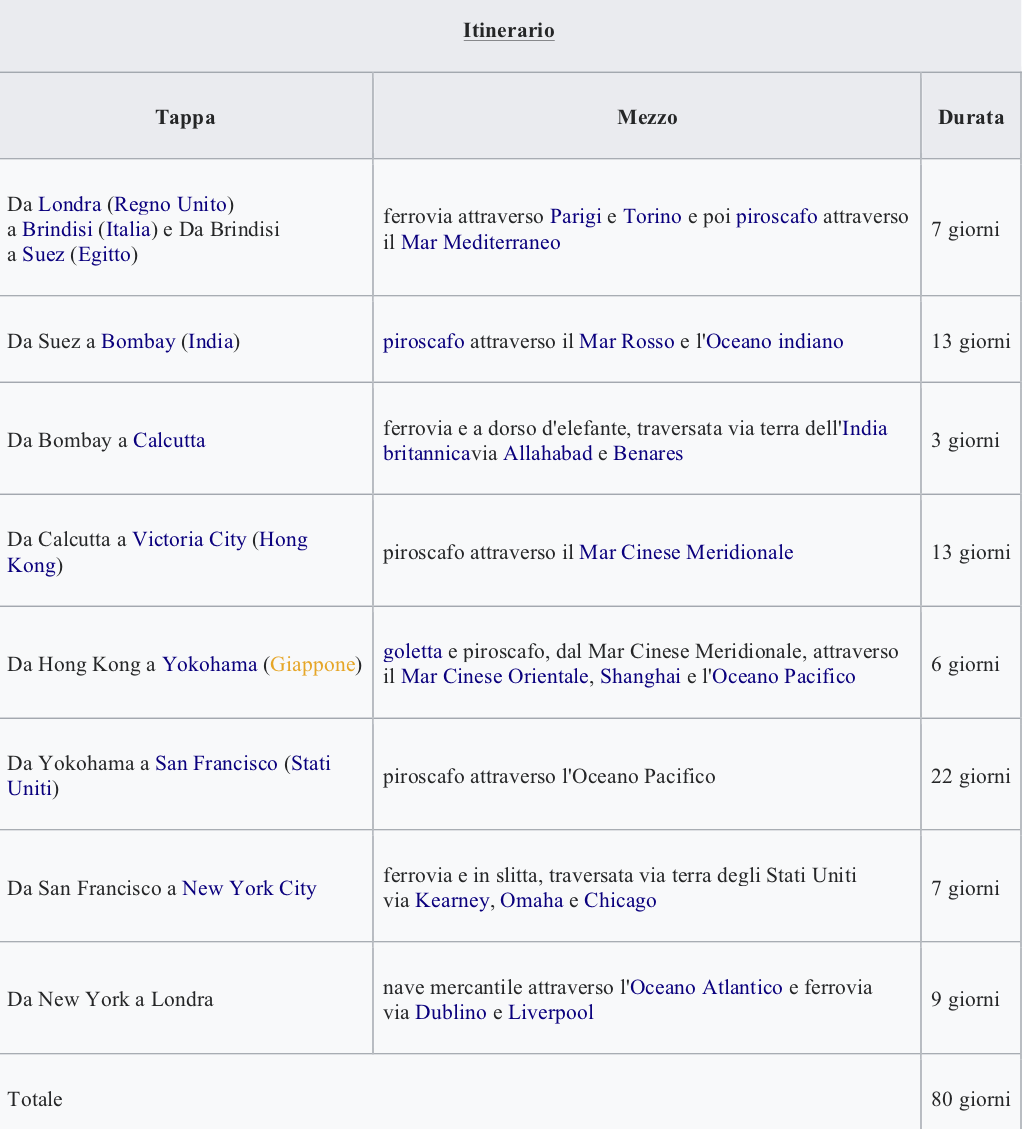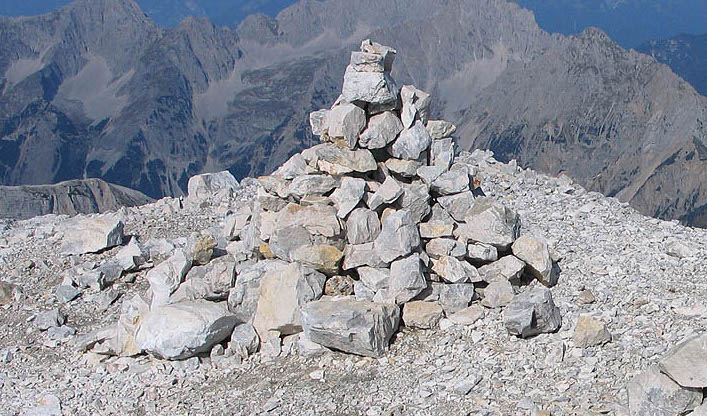Una rilettura de “Il giro del mondo in 80 giorni” per capire che la distanza è questione di sensibilità
Di qui alla mia meta: spazio o tempo? L’umanità divisa nella diversa percezione della distanza: una questione di sensibilità.

Di qui alla mia meta: spazio o tempo? L’umanità divisa nella diversa percezione della distanza: una questione di sensibilità.

(English translation below)
Fateci caso: per alcuni viaggi le distanze vengono misurate in chilometri. Per altri, in tempo. Quanto dista? Quattro chilometri. Oppure: cinque minuti. Qual è la norma? Non c’è.
In auto, usiamo entrambe le risposte. A piedi anche. Se andiamo a camminare e chiediamo un’indicazione possiamo sentirci dire “ancora due ore di strada”, ma anche “saranno dieci chilometri”. Nel primo caso ci troveremo probabilmente in un bosco, nel secondo in una carreggiata dove è facile sapere la distanza. Oggi nessuno li ha più (pare roba di un altro mondo, ne ho ancora uno ma non lo uso quasi mai), ma un curvimetro è un oggetto fantastico, che scivolando su una carta e regolato sulla sua scala, aiuta, eccome, nell’affinare i calcoli.
In aereo o in treno, tutto è solo misurato dal tempo – nessuno chiede quanto è distante Mosca, nessuno lo sa, ma quante ore di volo ci vogliono. È anche l’informazione che di da il capitano nei suoi annunci: il volo dura un’ora e quaranta minuti, aggiungendo anche che voleremo a un’altezza di cinquemila metri (che ci significa assai poco) ma senza mai specificare che la distanza percorsa è di 1.400 chilometri in linea d’aria. Del resto ci importerebbe poco, l’unica cosa che vale la pena di sapere è il tempo di percorrenza.
Non spesso si usano entrambe le notazioni – ad esempio accade in montagna: tre ore di distanza dal rifugio, traversata di cinque ore sul ghiacciaio. Ma anche una misura delle distanza di imprescindibile importanza: il dislivello – 700 metri, 1.600 metri di differenza tra l’altitudine del punto di partenza e quello di arrivo. Sta a noi fare un calcolo approssimativo di salita e di discesa.
Queste misurazioni non tengono mai conto degli imprevisti, che non sono solo di natura spiacevole: Marco Polo ricevette un invito a Isfahan: “volentieri accettammo. Ci fermammo otto anni”.
Quanto a Phileas Fogg e al suo maggiordomo Passepartout, l’impresa era mista: avevano ben presente dei chilometri da percorrere per effettuare il giro del mondo, ma c’era un tempo che scandiva tutto: ottanta giorni.
.

È quella sintesi che anima tutte le gare sportive, e già questo ci dice che quando dobbiamo considerare egualmente presenti tempo e spazio, entriamo in una sfera competitiva. Infatti il viaggio e le sue declinazioni sono sempre estensioni della nostra esistenza, sfide parallele, richiami, e anche in questo in caso la metafora del viaggio ci viene in soccorso, permettendoci di ritrovarci meglio nelle scelte della vita, nelle nostre decisioni che possiamo imboccare avendo a mente la distanza (le varie tappe, i passaggi necessari di un percorso) o nel tempo che ci diamo o ci è dato per realizzarle. Sono metodi che richiedono attenzioni ed energie diverse, e a volte anche risorse finanziarie diverse. Figli del tempo o dello spazio, questione, spesso, di umore, o di personalità.

C’è chi calcola il cammino per arrivare al proprio traguardo in anni e chi in giornate; chi misura la distanza in quante cose deve compiere prima di arrivarci, e poco conta il tempo che ci vorrà. Ognuno a suo modo, e ciò che conta non è nemmeno arrivare, ma ottenere le informazioni corrette prima di partire, e poi intraprendere la strada giusta e andare avanti fin dove si può. E durante il cammino, e poi al ritorno, lasciare delle piccole tracce perché chi viene dopo di noi sappia a che punto si trova.
ENGLISH VERSION
Humanity is divided into different perceptions of distance: a question of sensitivity
For some journeys, distances are measured in kilometers. For others, in time. How far is it? Four kilometers. Or: five minutes. What is the rule? There is not.
By car, we use both answers. On foot too. If we go for a walk and ask for directions, we can hear “two more hours ahead”, but also “it will be ten kilometers”. In the first case, we will probably find ourselves in a wood, in the second in a roadway where it is easy to know the distances. Today nobody has them anymore (it seems coming from another age, I still have one, but I never use it), but a curvimeter is a fantastic object, which by sliding on a paper and adjusted on its scale, helps, indeed, in finding the right calculation. On a plane or train, everything is just measured by time – no one asks how far Moscow is, for no one knows, but how many hours the flight takes. This is also the information given by the aircraft captain in his announcements: the flight lasts an hour and forty minutes, also adding that we will fly at a height of five thousand meters (which means very little to us) but without ever specifying that the distance traveled is 1,400 kilometers. After all, who cares, the only thing worth knowing is the travel time.
Not often both notations are used – for example, it happens in the mountains: three hours from the hut, five hours hiking on the glacier. There is another measure of space of essential importance: the difference in height – 700 meters, 1,600 meters of gap between the altitude of the starting point and that of arrival. It is up to us to make an approximate calculation of ascent and descent.
These measurements never take into account unforeseen events, which are not only of an unpleasant nature: once arrived in Isfahan, Marco Polo received an invitation to stop: “We gladly accepted. We stayed for eight years”. As for Phileas Fogg and his butler Passepartout, the undertaking was mixed: they had in mind the kilometers to travel around the world, but also the compulsory given time: eighty days.
This is the combination of sports competitions, and this already tells us that when we consider time and space equally present, we enter a competitive sphere. In fact, the journey and its variations are always extensions of our existence, parallel challenges. The metaphor of the journey once again comes to our aid, allowing us to find ourselves better in the choices of life, in our decision-making process, that we can base having in mind distance (the various necessary steps to reach a destination, a goal) or the time assigned to achieve our target. These methods require different attention and energy, and sometimes even different financial resources. Being children of time or of space is often a question of mood or personality.
There are those who calculate the path to reach their goal in years and those in days, and those in how many things he or she has to accomplish before getting there, and the time it will take matters little. Everyone gets it his or her own way, and what matters is not even arriving, but getting the correct information before leaving, and then taking the right path and moving forward as far as possible. And, during the journey and then on the way back, leave small traces so that those who come after us, know where they are.
